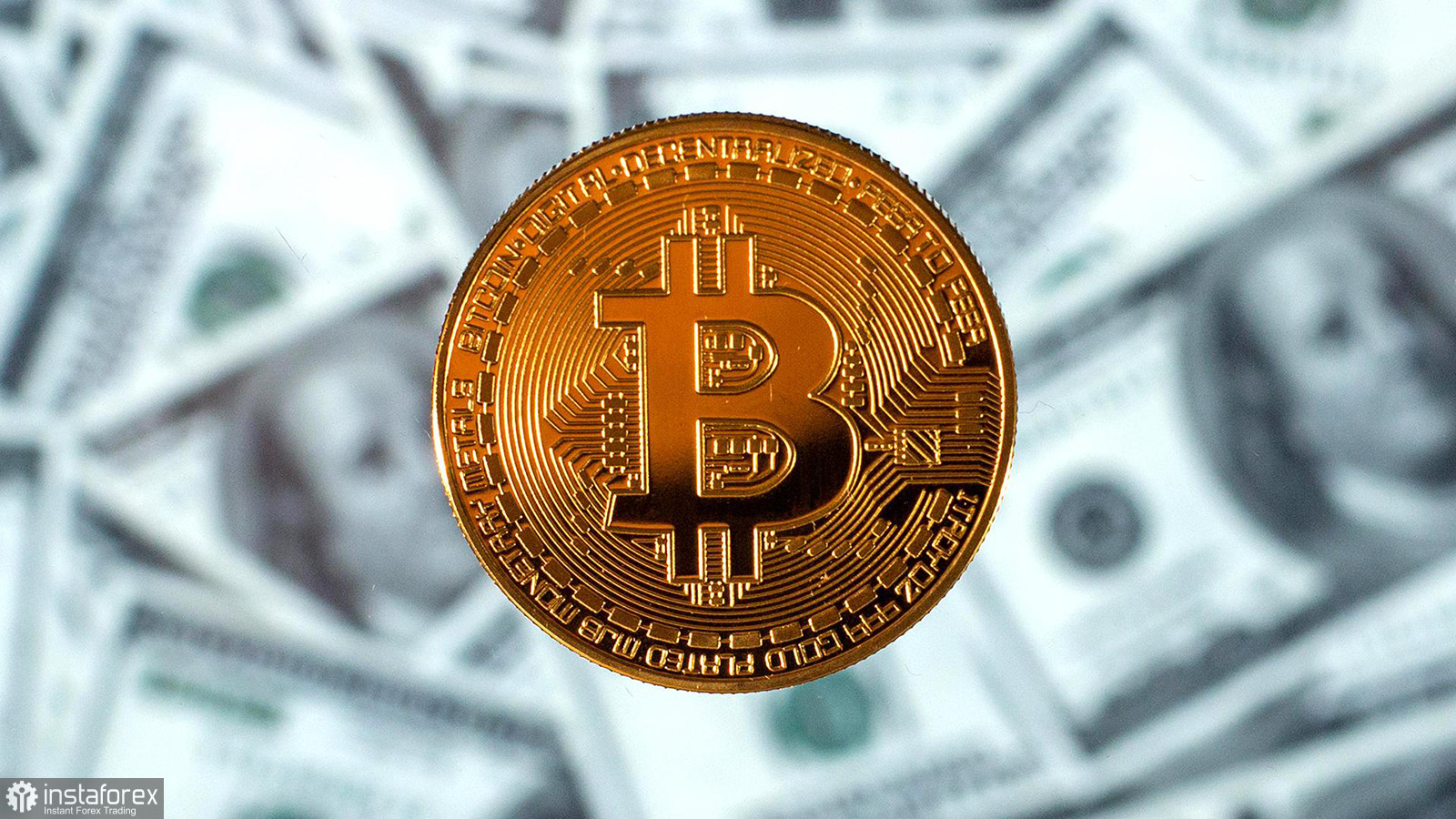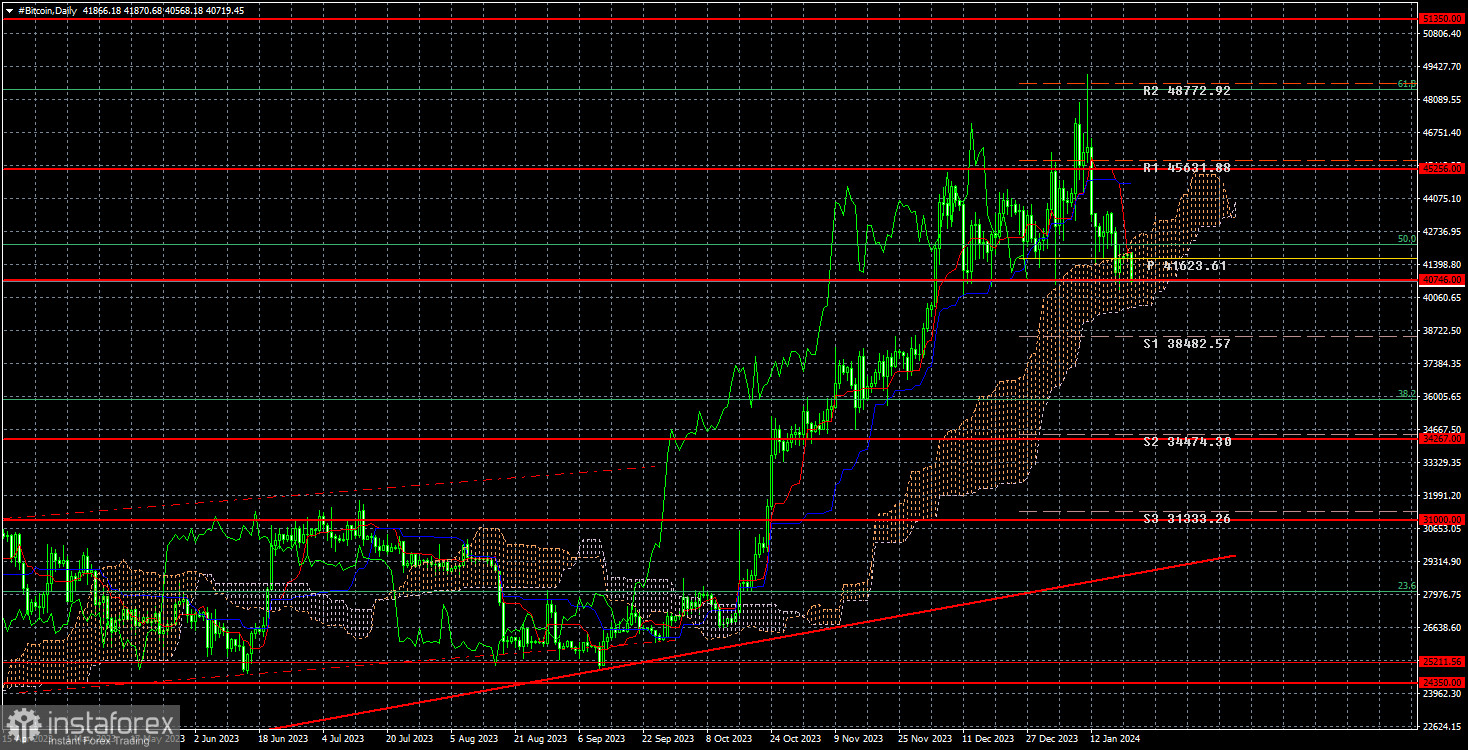
After Bitcoin's rally to $48,500 or the 61.8% Fibonacci level, the crypto took a nosedive and plunged by $8,000. Let us remind you that two weeks ago the US Securities and Exchange Commission greenlighted all applications from 14 asset management firms for the launch of spot Bitcoin ETFs, which immediately triggered a rally of the flagship cryptocurrency. Many experts were betting on an explosive growth of the most popular token as institutional investors will immediately rush to invest billions in the new Bitcoin-based exchange instrument. However, in practice, this did not happen. Of course, some investments were allocated to BlackRock, Fidelity, and other firms, but the amount of short positions on BTC turned out to be way larger. The old rule worked out: buy the rumor, sell the fact.
Bitcoin has been growing for more than a year, although sometimes without clear-cut specific reasons for this. Previously, we pinpointed three key bullish factors for Bitcoin, namely, the future Fed rate cut, the approval of spot Bitcoin ETFs, and the upcoming halving. These reasons were priced in and worked out by the market long ago. Investors were buying Bitcoin starting in November 2022 based on these expectations. If this is so, then it will be very difficult for the number one crypto to extend its growth.
We are not fans of the theory that Bitcoin's rally is set to last forever, as many experts predict. We do not believe that Bitcoin is "obliged" to grow just because each "halving" doubles the cost of mining one coin. It is already known that after the halving, the cost of mining one BTC token will be $37,800.
However, this does not mean that demand will necessarily increase. You are aware that it is not the cost of production (mining in this case) that determines the price of a particular asset. Supply and demand determine the price. If there is no demand for BTC or it is small, then the price can be at least $100,000 per coin, but this will prevent people from buying Bitcoin at $120,000.

We believe that a point is coming when the world will begin to shift focus away from this asset. First, thousands of alternative coins and digital assets have been already designed. Why should only Bitcoin be in demand? Secondly, Bitcoin never became a "replacement for money", "a means of protection against inflation", and "an instrument for storing value". Yes, so far it is only getting more expensive (if we take the long term). But no asset that, in fact, does not bring any benefit can rise in price forever. Bitcoin is increasingly becoming a "toy for the rich" or simply an investment tool. You can make money on it, but it's unlikely to be used for other purposes everywhere.
In the 24-hour time frame, Bitcoin pulled back to $40,746. We reckon that the downward movement will continue since the market has already fully taken into account the approval of the Bitcoin ETF and is now taking profits on longs. Overcoming the level of $40,746 will allow the cryptocurrency to be sold with a target of $34,267. This is a very realistic goal, despite all the mind-blowing forecasts that experts regularly share with us. A rebound from the level of $40,746 could provoke a new bullish sequence with targets at $45,256 and $48,500.





















